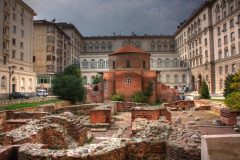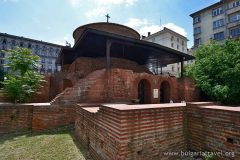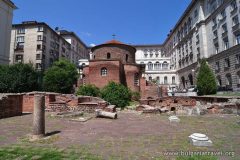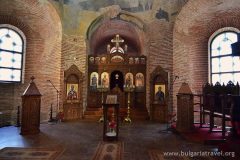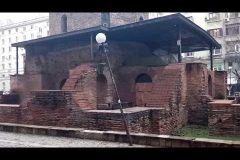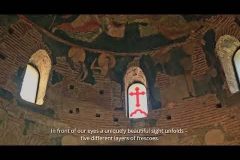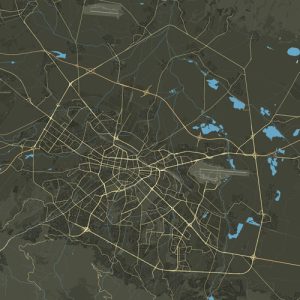The Rotunda Church of St. George stands as the oldest and remarkably preserved architectural monument from Roman times in Sofia. Constructed at the outset of the 4th century, during the reign of the Roman emperor Constantine the Great (306-337), it signifies the flourishing period of the ancient city of Serdika, the former name of Sofia. Widely regarded as the oldest building in Sofia, the Rotunda is situated within the inner courtyard of the Presidency, a mere few meters from the ruins of the ancient Serdika fortress.
The Rotunda is a cylindrical domed structure erected on a square base, boasting a diameter of around 9.50 meters and a height of approximately 14 meters. The altar room, which is square in shape, features four symmetrically positioned niches, with the main entrance situated on the west wall.
Originally serving public functions, the Rotunda underwent a transformation into a baptistery following the recognition of Christianity as a permitted religion in the Roman Empire. Emperor Justinian the Great (527-565) later converted the Rotunda into a church, and it has since been dedicated to St. Great Martyr George, who endured persecution for his faith in the 3rd century in Asia Minor under Emperor Diocletian (284-305).
During the Ottoman rule, Sultan Selim I (1512-1520) repurposed the “St. George” Rotunda into a mosque named Gul-jamasi. Christian frescoes were effaced and replaced with white plaster adorned with plant motifs. Following the Liberation in 1878, the Rotunda fell into disuse, later serving as a temporary mausoleum after the death of Prince Alexander Battenberg (1879-1886).
In 1915, restoration efforts commenced, and today the Rotunda remains an active church where daily services are conducted in Church Slavonic, accompanied by chants in Eastern Church singing, also known as Byzantine music.

